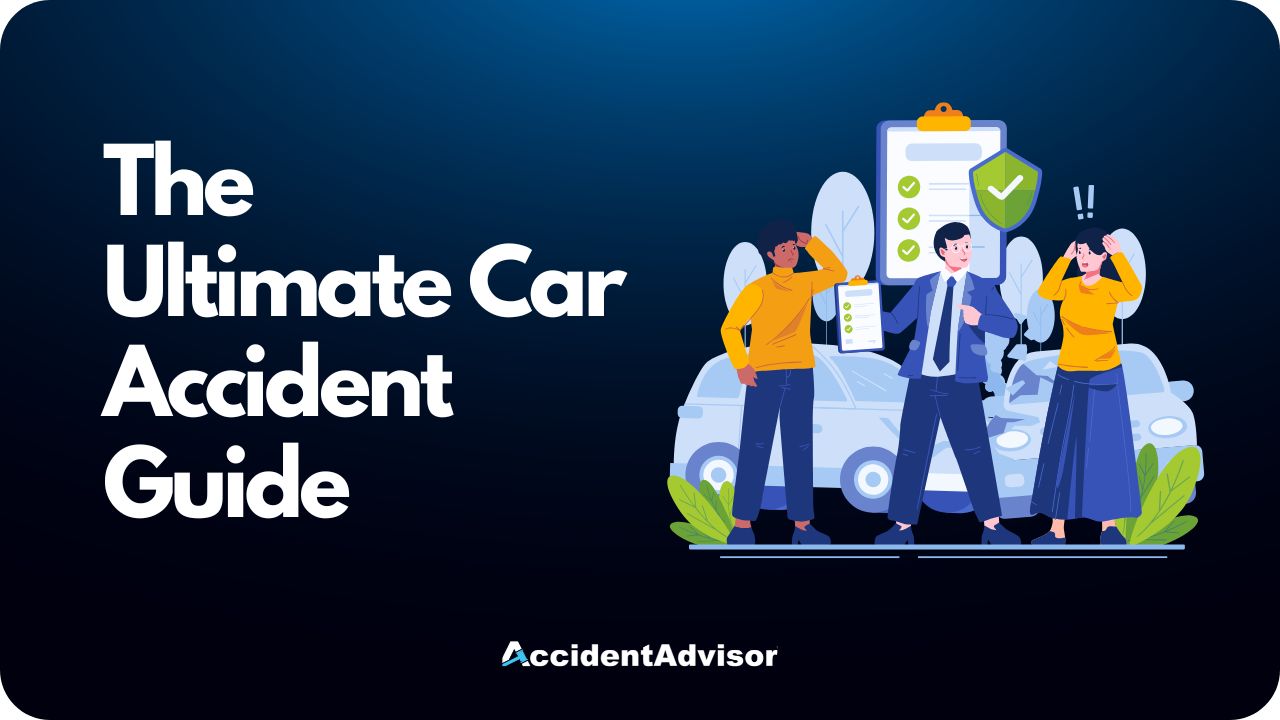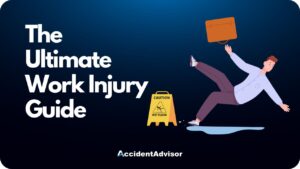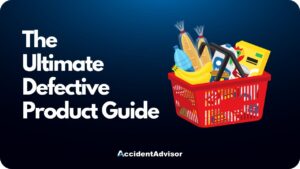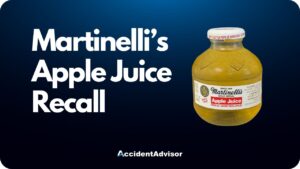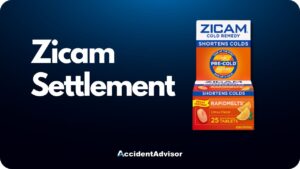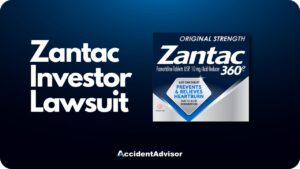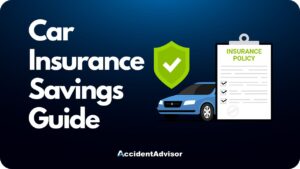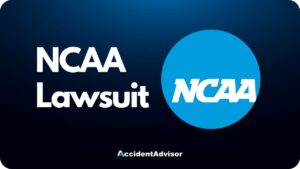Car accidents can happen in an instant, leaving you feeling shocked, overwhelmed, and unsure of what to do next. Whether it’s a minor fender bender or a serious collision, the aftermath often involves more than just damaged vehicles—it can include medical issues, insurance battles, financial stress, and even long-term legal considerations.
This guide is designed to be your step-by-step roadmap for navigating the aftermath of a car accident. It will walk you through everything from what to do immediately at the crash scene to seeking medical care, filing insurance claims, getting your car repaired, and understanding your legal rights.
Knowing what to do can make the difference between a smooth recovery and months of unnecessary stress. If you’re reading this shortly after being in an accident, take a deep breath—you’re not alone. If you’re preparing yourself in advance, you’ll gain the peace of mind that comes with being informed.
By the end of this guide, you’ll know how to:
- Protect yourself and others immediately after a crash
- Get the right medical care onsite and afterwards
- File insurance claims the right way (and avoid costly mistakes)
- Handle vehicle repairs or rental car needs
- Understand when and how to file a lawsuit
- Learn average settlement amounts based on injury type
- Prevent future accidents and access resources for recovery
Whether your accident was big or small, this guide will give you the tools to handle it confidently and protect your health, rights, and financial future.
Table of Contents
- 1. Immediate Steps After a Car Accident 🚗
- 2. Obtaining Medical Attention 🏥
- 3. Notifying Insurance & Filing a Claim 📄
- 4. Vehicle Repairs & Rental Cars 🚘
- 5. Legal Considerations ⚖️
- 6. Car Accident Settlements 💵
- 7. Preventing Future Car Accidents 🚦
- 8. Resources & Support 🤝
- Conclusion
1. Immediate Steps After a Car Accident 🚗
The moments right after a car accident are often confusing and stressful. Your heart races, adrenaline kicks in, and it can be difficult to think clearly. But what you do in those first few minutes can affect your safety, your ability to recover damages, and even the outcome of legal or insurance claims. Here are the key steps to take immediately after a crash.
1.1 Ensure Safety
Your top priority is safety. If the accident is minor and vehicles are still drivable, carefully pull over to the side of the road to avoid further collisions. Turn on your hazard lights to alert other drivers. If you have cones, flares, or reflective triangles in your emergency kit, place them behind your vehicle to create a buffer zone.
If your car cannot move, remain inside with your seatbelt fastened until it’s safe to exit—especially on busy highways.
1.2 Check for Injuries
Take a quick self-assessment. Are you bleeding, dizzy, or in pain? Then check on your passengers. If anyone appears injured, call 911 immediately. Even if injuries seem minor, it’s safer to let emergency responders evaluate everyone at the scene.
Never attempt to move someone who appears seriously injured unless there’s an immediate danger, such as fire or heavy traffic. Improper movement can worsen injuries like spinal damage.
1.3 Call Law Enforcement
In most states, you’re legally required to contact law enforcement if there are injuries, deaths, or significant property damage. Even if the accident seems minor, having an official police report provides an unbiased record that can be critical for insurance and legal purposes.
When officers arrive, stick to the facts. Avoid guessing, blaming, or apologizing—statements like “I didn’t see you” or “I’m sorry” can later be interpreted as admitting fault.
1.4 Exchange Information
Swap details with the other driver, including:
- Full name and contact information
- Driver’s license number
- Vehicle make, model, and license plate number
- Insurance company name and policy number
If there are witnesses, politely ask for their names and contact information as well. Their statements can help resolve disputes about what happened.
1.5 Document the Scene
The more evidence you gather, the stronger your insurance or legal claim will be. Use your phone to take:
- Photos of all vehicles from multiple angles
- Close-ups of damages and skid marks
- Road conditions (wet pavement, debris, obscured signs)
- Traffic signals or signs in the area
- Visible injuries to yourself or passengers
Also note the time, date, and weather conditions. If your phone has a voice memo app, record your immediate recollection while details are fresh.
Quick Recap: First Five Things to Do
- Stay calm and ensure safety.
- Check for injuries and call 911 if needed.
- Notify law enforcement for a police report.
- Exchange driver and insurance information.
- Document the scene with photos, videos, and notes.
Taking these steps lays the foundation for protecting your health, your finances, and your legal rights in the days and weeks ahead. Learn more about what to do after a car accident.
2. Obtaining Medical Attention 🏥
After a car accident, your health should be your top priority. Even if you feel “fine” in the moment, many injuries don’t show immediate symptoms. Seeking proper medical attention right away not only protects your well-being but also creates important documentation for insurance and potential legal claims.
2.1 Onsite Medical Response
If emergency medical technicians (EMTs) arrive, let them evaluate you. Adrenaline can mask pain, and you may not realize you’re injured. Common accident-related issues like concussions, whiplash, or internal bleeding aren’t always obvious at first glance. EMTs can stabilize you, recommend transport to the hospital if needed, and provide an initial medical report that becomes part of your case record.
2.2 Seeking Care Afterwards
Even if you don’t go to the hospital directly from the accident scene, you should visit a medical professional within 24–48 hours. Some injuries develop slowly, and waiting too long can worsen your condition. It also gives insurance companies an opening to argue your injuries weren’t caused by the accident. Common delayed symptoms include headaches, stiffness, dizziness, abdominal pain, and numbness.
2.3 Choosing the Right Medical Provider
Where you go for care depends on the severity of your injuries. Emergency rooms are best for serious trauma, head injuries, chest pain, or uncontrollable bleeding. Urgent care centers can handle less severe but still pressing issues, such as sprains, cuts, or mild concussions. For ongoing or specialized care, your primary care physician may refer you to specialists like orthopedists, neurologists, or chiropractors.
2.4 Keeping Medical Records
Accurate records are crucial. Save all medical bills, prescriptions, test results, and treatment plans. Keep a journal documenting your symptoms, pain levels, and how injuries affect your daily life. These details strengthen your insurance and legal claims by proving the direct connection between the accident and your injuries.
Quick Recap: Why Medical Attention Matters
- Protects your health and identifies hidden injuries
- Establishes documentation for claims and lawsuits
- Prevents insurers from downplaying or disputing your injuries
3. Notifying Insurance & Filing a Claim 📄
Once you’ve ensured safety and received medical attention, the next step is dealing with insurance. How you handle this process can significantly impact the compensation you receive for medical bills, vehicle repairs, and other losses. Acting quickly and carefully is key.
3.1 When to Call Your Insurance Company
Most insurance policies require you to report an accident “promptly,” often within 24–72 hours. Call your insurer as soon as you’re safe and able to speak clearly. Delaying can give them grounds to deny your claim. When you call, stick to the facts: the date, time, location, vehicles involved, and whether there were injuries. Avoid making guesses or admitting fault.
3.2 Filing an Insurance Claim
There are two main types of claims:
- First-party claims: Filed with your own insurance company, typically under collision coverage, personal injury protection (PIP), or MedPay.
- Third-party claims: Filed with the at-fault driver’s insurance company for damages and injuries.
You’ll likely need to provide:
- The police report number
- Photos of the accident and damages
- Contact information for drivers and witnesses
- Medical bills or treatment documentation
The insurer will open a claim file, assign an adjuster, and begin investigating.
3.3 Dealing with Insurance Adjusters
Adjusters work for the insurance company, not for you. They may appear friendly, but their goal is to minimize payouts. Be polite but cautious when speaking with them. Stick to the facts, avoid speculation, and never downplay your injuries. If you’re uncertain, it’s often best to consult an attorney before giving a recorded statement.
3.4 Common Insurance Claim Issues
- Disputed liability: The insurer may argue you were fully or partially at fault.
- Low settlement offers: Initial offers are often far below what your case is worth.
- Delays or denials: Claims may be drawn out in hopes you’ll settle quickly for less.
If you encounter these issues, consider involving a car accident lawyer to protect your rights and negotiate on your behalf.
Quick Recap: Insurance Claim Essentials
- Notify your insurer as soon as possible
- File the right type of claim (first- or third-party)
- Provide clear evidence and documentation
- Be cautious when speaking with adjusters
Learn more about how to file a car insurance claim.
4. Vehicle Repairs & Rental Cars 🚘
After dealing with medical attention and insurance, your next concern is likely your vehicle. Knowing your options for repairs, towing, and rental cars can save time, money, and frustration.
4.1 Getting Your Car Towed
If your car is not drivable, you’ll need a tow. Many insurance policies cover towing expenses, but check your coverage first. You can choose the tow company your insurer recommends, or, in some cases, select your own. Always keep receipts for towing and storage fees, as they can be reimbursed.
4.2 Repairing Your Vehicle
Insurance companies may suggest “preferred” repair shops. These shops often guarantee workmanship and handle billing with your insurer directly. However, you also have the right to choose your own repair shop. Make sure to get a detailed written estimate before any work begins. Take photos of your car before repairs for your records.
4.3 Rental Car Coverage
If your car is in the shop, you may need a rental vehicle. Rental coverage depends on your insurance policy or the at-fault driver’s liability coverage. Many insurers provide a daily limit and total maximum for rentals. If your policy doesn’t cover it, consider other options such as personal rental car insurance or rideshare services.
4.4 Total Loss & Vehicle Valuation
Sometimes, the insurance company will declare your car a “total loss,” meaning the cost to repair exceeds its market value. Insurers determine this value using factors like year, mileage, condition, and local sales data. If you disagree with their valuation, you can provide your own evidence, such as private sale listings or independent appraisals.
Quick Recap: Managing Vehicle Damage
- Arrange for towing if necessary and keep receipts
- Choose a repair shop carefully and document all damage
- Check rental car coverage through your insurance
- Understand how “total loss” is determined and how to dispute it
5. Legal Considerations ⚖️
Car accidents often involve more than just insurance claims. Understanding your legal rights and options can help protect you from unfair treatment and ensure you receive appropriate compensation for injuries and damages.
5.1 When to Contact a Car Accident Lawyer
Not every accident requires legal representation, but certain situations make it strongly advisable:
- Severe or permanent injuries
- Disputed liability or fault
- Accidents involving uninsured or underinsured drivers
- Multi-vehicle collisions or commercial vehicles
- Difficulty obtaining a fair settlement from insurance
Many personal injury attorneys offer free consultations and work on a contingency fee basis, meaning you pay only if you win.
5.2 Filing a Car Accident Lawsuit
If negotiations with insurance fail or injuries are severe, filing a lawsuit may be necessary. Key steps include:
- Statute of Limitations: Each state sets a deadline for filing, usually 1–3 years. Missing it can forfeit your right to sue.
- Complaint: Your attorney files a legal complaint outlining the accident, injuries, and damages.
- Discovery: Both sides exchange evidence, including medical records, police reports, and witness statements.
- Settlement Talks: Many cases settle before trial, often after mediation or negotiation.
- Trial: If no settlement is reached, your case goes to court for a judge or jury decision.
5.3 Proving Fault in a Car Accident Case
Establishing liability is crucial. Evidence may include:
- Police reports and traffic citations
- Medical records linking injuries to the accident
- Photographs and videos of the scene
- Expert testimony on vehicle damage or accident reconstruction
States may follow comparative negligence (fault is shared) or contributory negligence (any fault by the plaintiff can bar recovery) rules, affecting how much you can recover.
5.4 Special Cases
- Uninsured/Underinsured Drivers: If the other driver lacks sufficient coverage, your own policy’s uninsured/underinsured motorist coverage may apply.
- Multi-Car Accidents: Determining fault can be more complex; documentation and witness testimony are critical.
- Commercial Vehicles: Accidents involving trucks or rideshares may involve corporate liability and federal regulations, adding complexity to claims.
Quick Recap: Legal Considerations
- Contact a lawyer when injuries are serious, fault is disputed, or insurance is uncooperative
- Understand filing deadlines and lawsuit procedures
- Collect evidence to prove liability
- Consider special rules for uninsured drivers, multi-car accidents, and commercial vehicles
Learn more about how to file a car accident lawsuit.
6. Car Accident Settlements 💵
Understanding settlements can help you set realistic expectations for compensation after a car accident. Settlements aim to cover economic and non-economic losses resulting from the crash.
6.1 Average Settlement Amounts
Settlement amounts vary widely based on the severity of injuries, liability, and other factors. Minor fender benders with no injuries might resolve for a few hundred to a few thousand dollars. Accidents involving serious injuries or permanent disability can result in settlements in the tens or even hundreds of thousands. Key factors influencing payouts include:
- Extent of injuries and long-term effects
- Medical expenses and lost income
- Property damage
- Degree of fault
6.2 Settlements by Injury Type
- Whiplash and soft tissue injuries: Often settle for a few thousand to tens of thousands of dollars, depending on treatment length.
- Broken bones and fractures: Settlements usually range from tens of thousands to over $100,000 for severe cases or complications.
- Traumatic brain injuries (TBI): Can result in settlements from $100,000 to $1 million+ depending on severity and long-term care needs.
- Spinal cord injuries and paralysis: Often among the highest payouts due to lifelong care requirements, sometimes reaching millions.
- Wrongful death claims: Settlements vary widely, considering lost income, emotional distress, and funeral expenses.
6.3 Types of Compensation
- Economic damages: Reimbursement for medical bills, vehicle repairs, lost wages, and other quantifiable expenses.
- Non-economic damages: Compensation for pain and suffering, emotional distress, loss of enjoyment of life, and other intangible losses.
- Punitive damages: Rare, intended to punish gross negligence or intentional wrongdoing.
6.4 Timeline for Settlements
Settlement timelines vary. Minor claims can resolve in a few weeks, while severe injury cases may take months or years due to medical treatment completion, liability disputes, or negotiation delays. Cases may settle faster if liability is clear and medical documentation is thorough.
Quick Recap: Understanding Settlements
- Settlement amounts depend on injury severity, liability, and damages
- Economic and non-economic losses are considered
- Complex injuries or disputes can extend the timeline
- Legal representation can help maximize your compensation
Learn more about car accident settlements.
7. Preventing Future Car Accidents 🚦
While no one can completely eliminate the risk of a car accident, adopting safe driving practices and maintaining your vehicle can significantly reduce your chances of being involved in a collision.
7.1 Safe Driving Practices
- Avoid distractions: Don’t use your phone, eat, or multitask while driving.
- Obey speed limits: Speeding reduces reaction time and increases the severity of accidents.
- Follow traffic rules: Stop signs, traffic lights, and right-of-way rules exist to prevent collisions.
- Keep a safe following distance: This gives you more time to react to sudden stops or hazards.
- Drive defensively: Assume other drivers may make mistakes and anticipate potential dangers.
7.2 Vehicle Maintenance
Regular maintenance keeps your car safe on the road:
- Brakes: Ensure they are responsive and inspected regularly.
- Tires: Maintain proper pressure and tread depth to prevent skidding.
- Lights: Headlights, brake lights, and turn signals must be functional.
- Recalls: Stay up to date on recalls for your vehicle model and address any required repairs promptly.
7.3 Technology & Safety Features
Modern vehicles come with advanced safety features that can reduce accidents:
- Lane departure warnings and lane-keeping assist prevent unintentional drifting.
- Automatic emergency braking helps avoid collisions in sudden stop scenarios.
- Blind-spot detection alerts you to vehicles in hard-to-see areas.
- Adaptive cruise control maintains safe distances automatically on highways.
By combining responsible driving habits with proper maintenance and the use of safety technology, you can lower your risk of accidents and improve overall road safety.
Quick Recap: Preventing Accidents
- Drive attentively and defensively
- Maintain your vehicle regularly
- Utilize modern safety technologies
8. Resources & Support 🤝
Recovering from a car accident involves more than just medical care and insurance claims. Emotional, financial, and practical support can make the process less overwhelming. Knowing what resources are available helps you navigate recovery more smoothly.
8.1 Emotional & Psychological Support
Car accidents can cause trauma, anxiety, or PTSD. Even if injuries are minor, the emotional impact can be significant. Consider:
- Therapy or counseling: Licensed professionals can help you process trauma and cope with anxiety.
- Support groups: Connecting with others who have experienced car accidents can provide encouragement and practical advice.
- Mindfulness and stress reduction: Techniques such as deep breathing, meditation, or yoga can help manage anxiety and improve overall well-being.
8.2 Financial Assistance Options
Accidents can create unexpected financial strain. Options include:
- Medical coverage: Personal injury protection (PIP), MedPay, or health insurance can cover medical expenses.
- State or nonprofit programs: Some organizations assist with accident-related costs, particularly for victims of uninsured drivers.
- Employer support: Short-term disability or workers’ compensation may apply if the accident affects your ability to work.
8.3 Helpful Checklists
Having checklists ready can simplify the recovery process:
- Post-accident to-do list: Include steps like calling the police, documenting the scene, seeking medical attention, and notifying insurance.
- Emergency car kit: Keep items like a first-aid kit, flashlight, reflective triangles, phone charger, and pen/paper for documenting incidents.
- Medical tracking journal: Document treatments, medications, and symptoms to support insurance or legal claims.
Quick Recap: Leveraging Resources
- Seek emotional and psychological support when needed
- Explore financial assistance programs and insurance coverage
- Use checklists to stay organized and prepared
Conclusion
Being involved in a car accident is stressful, but knowing the steps to take can make the process more manageable and help protect your health, finances, and legal rights. From the moments immediately after the crash to medical care, insurance claims, vehicle repairs, legal considerations, and settlements, each step plays a critical role in your recovery.
This guide has covered:
- Immediate actions to ensure safety and document the scene
- Seeking medical attention promptly, even for minor injuries
- Navigating insurance claims and communicating with adjusters
- Repairing or replacing your vehicle and understanding rental coverage
- When and how to pursue legal action if necessary
- Typical settlement amounts based on injury type
- Preventing future accidents through safe driving and vehicle maintenance
- Resources for emotional support, financial assistance, and organization
Remember, accidents can have lasting impacts, but you don’t have to face them alone. Seek medical care, maintain thorough records, consult legal professionals when needed, and leverage available support systems. Being informed and proactive empowers you to recover safely, efficiently, and with confidence.
Your safety and well-being come first, and taking these steps ensures you can move forward with clarity, protection, and peace of mind.

Rocky Horton
Author

